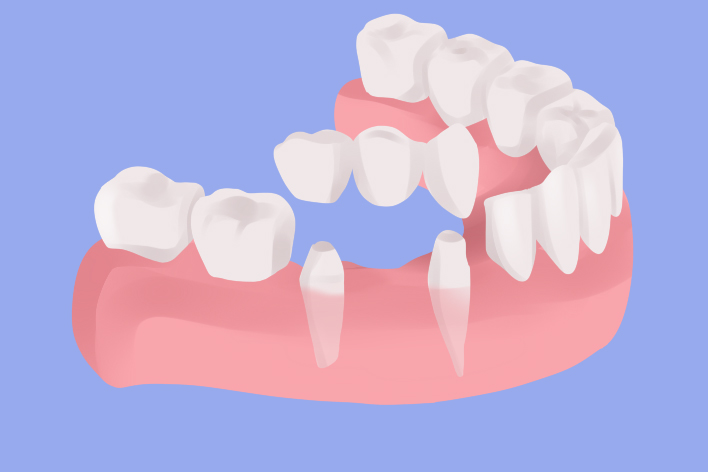Dental Bridges
 When one or more teeth are missing, the remaining teeth can drift out of position, leading to a change in the bite and the loss of additional teeth through decay and gum disease. When tooth loss occurs, we may recommend the placement of a bridge. Designed to replace missing teeth and support surrounding teeth, a bridge is a grouping of interconnected crowns. Held in place by two crowns, a bridge can reduce the risk of gum disease while helping to correct bite issues and even improve speech. If you are missing one or several teeth, a bridge may be an excellent choice to fill the gap.
When one or more teeth are missing, the remaining teeth can drift out of position, leading to a change in the bite and the loss of additional teeth through decay and gum disease. When tooth loss occurs, we may recommend the placement of a bridge. Designed to replace missing teeth and support surrounding teeth, a bridge is a grouping of interconnected crowns. Held in place by two crowns, a bridge can reduce the risk of gum disease while helping to correct bite issues and even improve speech. If you are missing one or several teeth, a bridge may be an excellent choice to fill the gap.
The Benefits Dental Bridge
A dental bridge spans the gap where a missing tooth once was, filling the space with a synthetic tooth. Like a bridge over a river, most dental bridges need support at either end, although cantilever bridges are an exception. Fitting a bridge requires reshaping the abutment teeth and capping them with crowns to hold the bridge securely.
Who Needs a Dental Bridge?
Anyone with missing or damaged teeth may be a candidate for dental bridges. Without something to occupy gaps, the remaining teeth can shift position and alter your bite. These changes can lead to jaw pain, headaches, and an increased risk of periodontal disease. Bridgework is more than a cosmetic procedure; it is essential to dental health. Bridges serve a number of purposes:
- Restoring a healthy bite to facilitate chewing
- Maintaining the contours of the face
- Improving your smile
- Reducing damage to remaining teeth from a misaligned bite
- Restoring self-confidence after an accident or injury
- Materials for Dental Bridges
Materials for Dental Bridge
Creating a dental bridge is both a science and an art. The bridgework must feel functional and natural, and it must also match your natural teeth. To mimic the look of natural enamel, dentists may use zirconia or porcelain fused to metal.
Getting a Dental Bridge
Your dentist will schedule two appointments to create and fit your bridge. First, the dentist will give you a local anesthetic during your first visit and prepare the abutment teeth for the appliance. Then, after shaping the neighboring teeth, the dentist will take a bite impression. This impression will become the mold for the bridge’s structure. You will then get a temporary bridge and crowns to protect the abutment teeth while your permanent bridge is being made.
During your second dental appointment, you will have your permanent bridge fitted and shaped. If it is a fixed bridge, the dentist will attach it to the abutment teeth. For removable bridges, metal or plastic clasps are affixed to the abutment teeth to hold the appliance.
Caring for Dental Bridge
Bridgework must be cleaned diligently, which requires adding a few new tools to your oral hygiene regimen. A dental floss threader lets you sweep under your bridgework to keep the area clean. Small, flexible brushes can also be handy. Water jet devices blast trapped food particles from beneath bridgework. Your dentist may also recommend oral care products to help care for your porcelain or resin bridge.
Removable bridges require gentle handling. Porcelain is a brittle substance and can chip if mistreated. Set your bridge down carefully instead of dropping it onto hard surfaces. Removable bridgework should be cleaned as often as you clean your other teeth and can be brushed with the same toothpaste or cleansers designed for dentures.